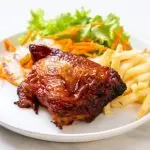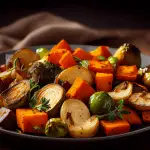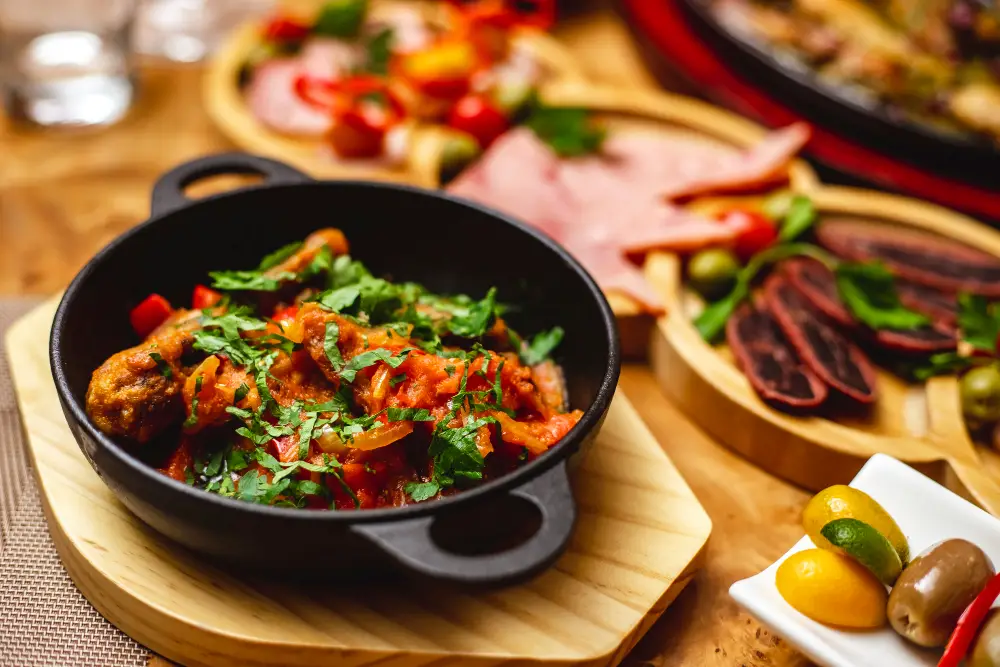Skip to contentPan-Asian Vs. Asian Fusion Cuisine
Two terms often pop up in the bustling world of culinary delights:
Pan-Asian and Asian Fusion Cuisine. But what do they really mean?
Pan-Asian cuisine refers to dishes from various Asian countries, maintaining their traditional flavors and cooking techniques. On the other hand, Asian fusion cuisine blends elements from different Asian cultures, creating unique and innovative dishes. These dishes combine flavors and ingredients in unexpected ways.
We’re exploring the flavors today: Pan-Asian vs. Asian Fusion Cuisine. Let’s dive in and uncover the delicious differences between the two.
What Does Pan-Asian Mean?
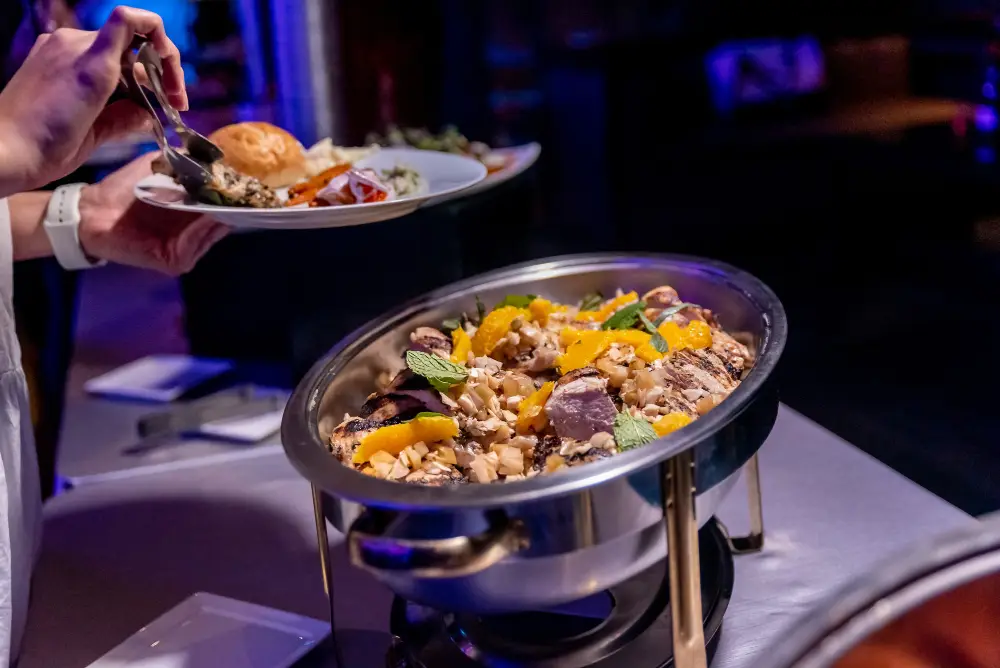
Pan-Asian cuisine is like a passport to the diverse flavors of Asia. Picture you’re savoring the tangy sweetness of Thai pad thai, the umami richness of Japanese sushi, or the soothing warmth of Chinese dim sum.
Pan-Asian cuisine combines these traditional dishes from various Asian countries, each maintaining its unique flavors and cooking techniques. It’s like taking a flavorful journey across the continent without leaving your dining table. This is what pan-Asian cuisine is.
Advantages of Pan-Asian Cuisine
- Diverse Flavor Profiles: Pan-Asian cuisine offers various flavors, from spicy and tangy to sweet and savory, catering to different tastes.
- Health Benefits: Incorporates plenty of fresh vegetables, lean proteins, and aromatic herbs and spices, contributing to a balanced and nutritious diet.
- Culinary Exploration: Provides an opportunity to explore the culinary traditions of multiple Asian countries, including Japan, China, Thailand, India, and more, offering a rich and diverse gastronomic experience.
- Flexibility and Adaptability: Pan-Asian cuisine lends itself well to fusion cooking, allowing for creative combinations and innovative dishes that appeal to modern palates.
- Cultural Immersion: Through food, individuals can immerse themselves in the cultures and traditions of different Asian countries, fostering a deeper appreciation and understanding of diverse culinary heritages.
What is Asian Fusion Cuisine?
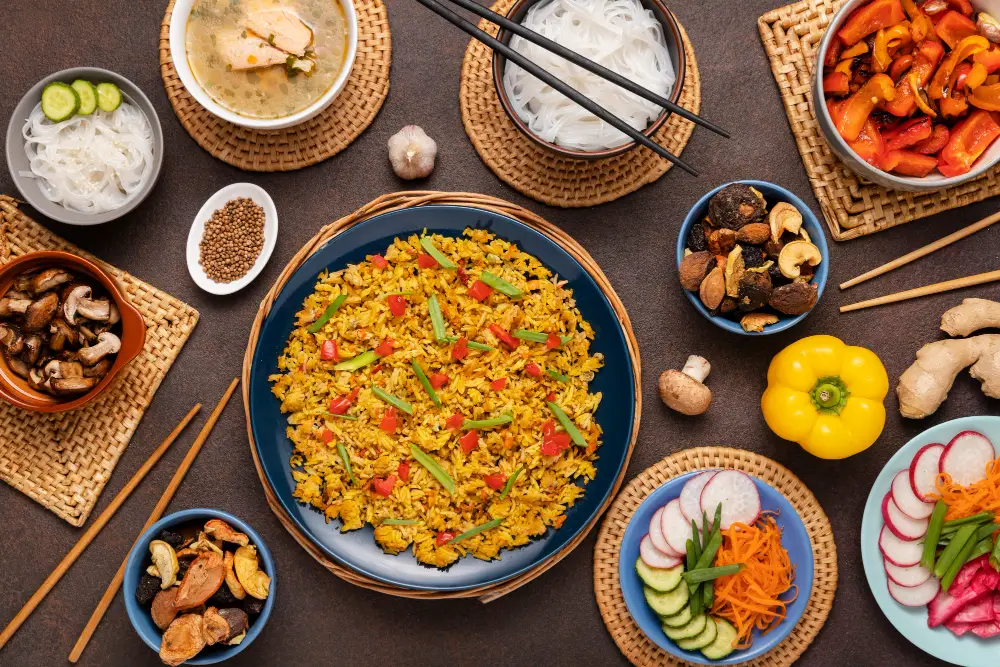
Now, let’s add a twist to the mix. What is Asian fusion food? Asian fusion cuisine is like a rebellion with a culinary cause. Unlike Pan-Asian, which sticks to the tried-and-tested traditional recipes, Asian Fusion cuisine gets creative. It blends elements from different Asian cultures to create exciting and innovative dishes.
Think sushi burritos, Korean tacos, or Thai-infused pizzas. It’s similar to a culinary adventure where unexpected flavor combinations dance on your taste buds, leaving you craving more.
- Creative Fusion: Asian fusion cuisine blends the best elements of traditional Asian cooking with global culinary influences, resulting in innovative and exceptional dishes that push the boundaries of taste.
- Diverse Flavor Combinations: Combines the bold flavors and spices of Asian cuisines with ingredients and techniques from around the world, creating exciting and unexpected taste sensations.
- Culinary Experimentation: Allows chefs to experiment with unconventional pairings and cooking methods, resulting in adventurous and delicious dishes.
- Accessibility: Asian fusion cuisine often incorporates familiar ingredients and cooking styles, making it approachable for many diners, including those new to Asian flavors.
- Cultural Crossroads: Reflects the multicultural nature of contemporary society, celebrating diversity and promoting cultural exchange through food.
Understanding the Difference: Pan-Asian vs. Asian Fusion Food
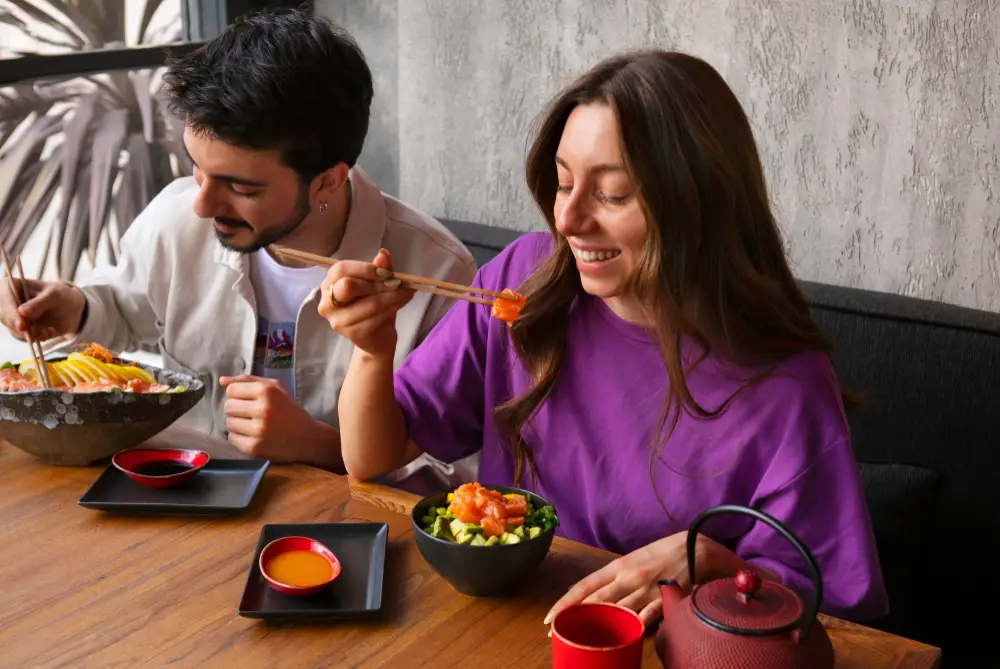
So, what sets these two apart? In a nutshell, Pan-Asian cuisine stays true to its roots, honoring the authenticity of each dish. In contrast, Asian Fusion cuisine dares push the boundaries. It mixes and matches flavors to create something new.
Pan-Asian cuisine covers dishes from across Asia, like sushi from Japan, pad thai from Thailand, and dim sum from China. It maintains authentic flavors.
Asian fusion, on the other hand, blends elements from different Asian cultures, creating innovative dishes like sushi burritos or Korean tacos. So, while Pan-Asian sticks to traditional recipes, Asian fusion gets creative. It uses new combinations, offering a unique culinary experience.
Let’s break it down further. When you think of Pan-Asian cuisine, envision traditional dishes prepared with precision and care, celebrating the rich culinary heritage of each Asian country.
On the other hand, Asian Fusion food is all about experimentation and innovation, where chefs fearlessly blend ingredients and techniques to craft bold and imaginative creations.
The Verdict: Which One Wins?
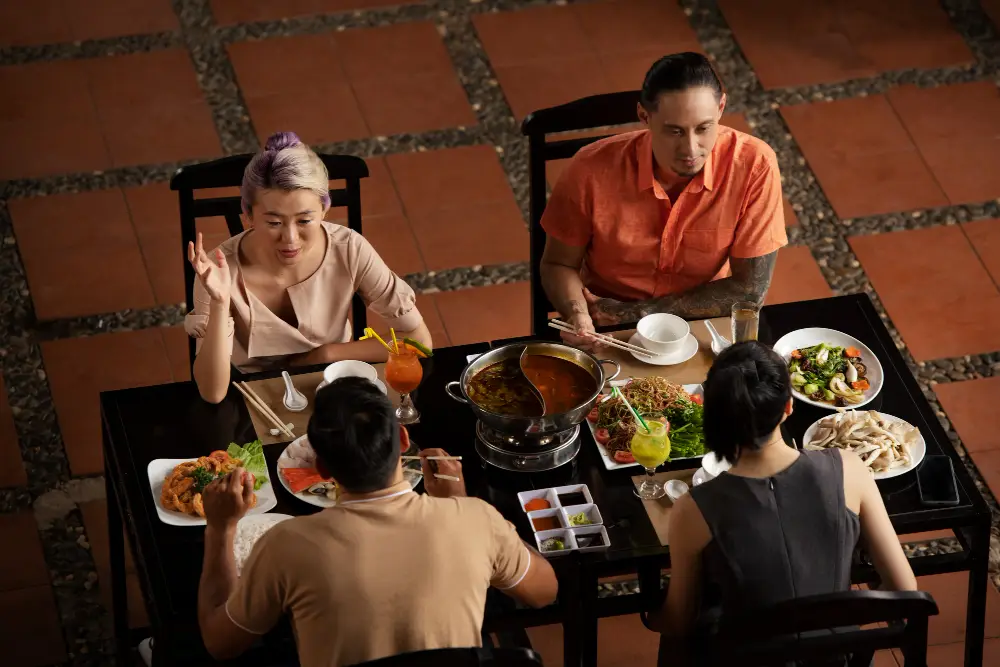
Well, that’s the beauty of it – there’s no clear winner. It all boils down to personal preference and the dining experience you seek. Craving a taste of tradition? Go for Pan-Asian cuisine. Want to embark on a culinary adventure? Give Asian Fusion a try.
Key Takeaways: Conclusion on Pan-Asian vs. Asian FusionConclusion
In the world of food, variety is the spice of life, and Pan-Asian and Asian Fusion cuisine offer just that – a delightful array of flavors and experiences to tantalize your taste buds.
So, the next time you’re pondering where to dine, consider this: Are you in the mood for a classic culinary journey or an exhilarating fusion adventure?
The choice is yours, and the possibilities are endless. Bon appétit!
Culinary Collective Atl: Epicurean Excellence
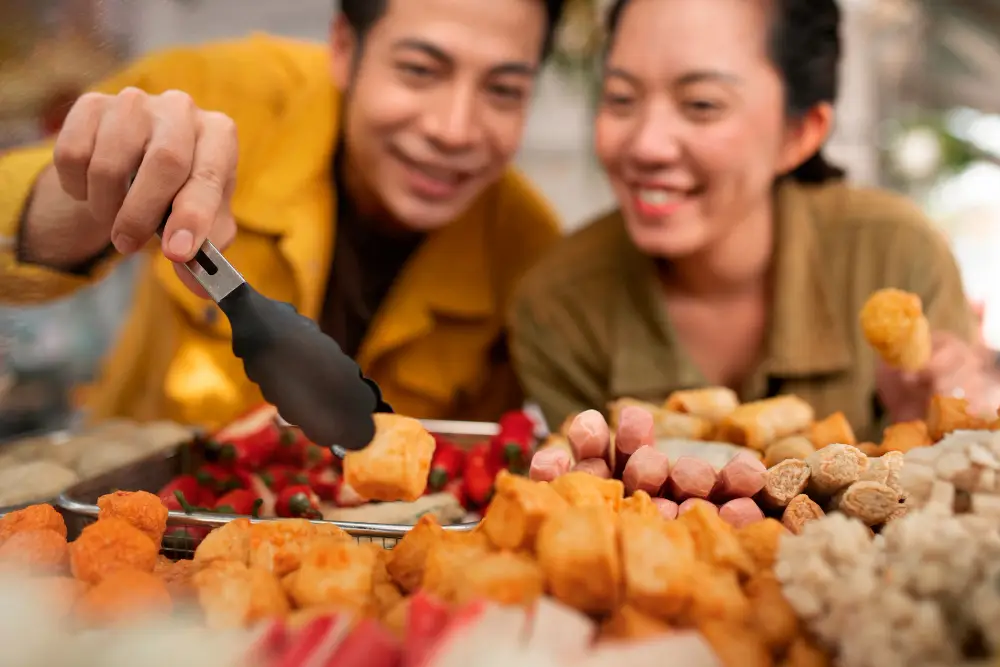
Experience the harmonious symphony of flavors with Culinary Collective ATL! Whether you’re a connoisseur of Pan-Asian cuisine or eager to explore the art of Asian fusion, our collective brings together a vibrant tapestry of culinary delights to ignite your taste buds.
There’s something for every palate, from exclusive tastings to interactive cooking classes and chef-led events. Join us now and unlock a world of epicurean excellence. Don’t miss out – become part of the Culinary Collective ATL today!
Read more:
ingredient, culture, meat, rice, culinary arts, meal, spice, taste, cuisine, recipe, tourism, chef, sauce, curry, asian cuisine, fusion cuisine, japanese cuisine, bánh mì, vietnamese cuisine, china, herb, grilling, vietnam, cooking, asia, mango, umami, japan, bread, kitchen, thailand, dish, egg, cao lầu, pork, indian cuisine, cookbook, art, united kingdom, vegetable, burrito, beef, coriander, heat, noodle, pad thai, soup, exploration, indonesia, soy sauce, gastronomy, flavors, ingredients, nasi goreng, bánh, french cuisine, singapore, ho chi minh city, book, garlic, lime, bean, southeast asia, dim sum, baking, data, steaming, pasta, salt, mexico, stew, taste bud, street food, understanding, tom yum, nutrition, france, pastry, salad, garden, adventure, protein, information, hainanese chicken rice, mayonnaise, language, india, fish, sweetness, cheese, philippines, italy, experience, milk, landscape, malaysia, innovation, grain, hanoi, knowledge, da nang, indonesian cuisine, society, paper, oil, crab, basmati, anthony bourdain, roasting, cumin, menu, ginger, tapestry, olive, street, cao, cloudfront, vietnamese, culinary, contact, website, city, country, global, gardens, noodles, ancient, mexican, fried rice, tofu, yolk, juice, lemon, celebrity chef, europe, sustainability, literature, east asia, chinese cuisine, korea, continent, asian americans, korean cuisine, colonialism, community, ideology, imperialism, link, thai cuisine, nation, music, central asia, black pepper, faith, orient, south korea, spirituality, civilization, tank, asean, christianity, new york city, attention, chinese culture, war, economy, what is pan asian food, stir frying, culture of asia, advertising, foodie, middle eastern cuisine, south asian cuisine, middle east, onion, staple food, central asian cuisine, cabbage, creativity, wonton, frying, turmeric, fish sauce, thai curry, basil, bangladesh, west asia, soybean, jasmine rice, sesame, ancient history, broccoli, pakistan, bibimbap, galangal, tradition, vegetarianism, hot and sour soup, lebanon, vinegar, vitamin, lamb and mutton, yin and yang, arabian peninsula, diet
Frequently Asked Questions
What cuisines are typically included in pan Asian food?
Pan-Asian food typically includes a diverse range of cuisines such as Chinese, Japanese, Thai, Vietnamese, Korean, and Malaysian. These styles merge unique culinary techniques and flavors from various Asian regions into a harmonious dining experience.
Can pan Asian food be vegetarian or vegan?
Pan-Asian food can indeed be vegetarian or vegan. Many dishes feature a variety of vegetables, tofu, and plant-based ingredients, making it easy to enjoy flavorful meals without meat or animal products.
What are some popular pan Asian sauces?
Popular Pan-Asian sauces include soy sauce, hoisin sauce, chili garlic sauce, and peanut sauce, which enhance the flavors of dishes and reflect the diverse culinary traditions of the region.
Is pan Asian food a fusion of different cuisines?
Pan-Asian food is a collection of culinary traditions from various Asian countries rather than a fusion. It showcases the distinct flavors and techniques of each region, providing a diverse dining experience that celebrates the best of Asian cuisines.
How does pan Asian food differ from Chinese food?
The difference between Pan-Asian food and Chinese food lies in their breadth and variety. Pan-Asian cuisine encompasses dishes from multiple Asian cultures, including Thai, Japanese, and Vietnamese, while Chinese food focuses specifically on the diverse culinary traditions of China.
What are the common ingredients in pan Asian dishes?
The common ingredients in Pan-Asian dishes include rice, noodles, soy sauce, ginger, garlic, and a variety of fresh vegetables and proteins like chicken, shrimp, and tofu, reflecting the diverse culinary traditions across Asia.
Are Japanese dishes part of pan Asian cuisine?
Japanese dishes are indeed part of pan-Asian cuisine, which encompasses various culinary traditions from across Asia, including Japan. Pan-Asian cuisine celebrates the diversity and flavors of multiple Asian cultures, integrating elements from each, including Japanese dishes.
What dishes represent authentic pan Asian cuisine?
Authentic Pan-Asian cuisine is represented by dishes such as Thai Green Curry, Japanese Ramen, Korean Bibimbap, and Vietnamese Pho, showcasing the rich flavors and techniques from diverse Asian cultures.
How are flavors balanced in pan Asian dishes?
The balance of flavors in Pan-Asian dishes involves a harmonious blend of sweet, sour, salty, and spicy elements, often achieved through the use of ingredients like soy sauce, lime, chili, and fresh herbs, creating a vibrant and complex taste profile.
Which countries influence pan Asian food culture?
The countries that influence Pan-Asian food culture include China, Japan, Thailand, Vietnam, Korea, and India, each contributing unique flavors, ingredients, and cooking techniques that shape this diverse and vibrant culinary style.
What cooking styles are prevalent in pan Asian cuisine?
The cooking styles prevalent in Pan-Asian cuisine include stir-frying, steaming, grilling, and deep-frying. These techniques showcase the diverse flavors and textures found in dishes from various Asian cultures, blending ingredients for a harmonious culinary experience.
How is pan Asian food adapted for local tastes?
Pan-Asian food is adapted for local tastes by incorporating regional ingredients, adjusting spice levels, and blending cooking techniques to resonate with local flavor preferences, enhancing the overall dining experience while remaining true to its diverse culinary roots.
What is the role of rice in pan Asian diets?
The role of rice in Pan-Asian diets is fundamental, serving as a staple food that provides essential carbohydrates, supports various culinary traditions, and complements diverse dishes across the region. It is integral to nutrition and cultural identity in many Asian communities.
What are traditional pan Asian dining customs?
Traditional Pan-Asian dining customs include communal sharing of dishes, the use of chopsticks, and often eating with family or friends, emphasizing harmony and respect. Meals typically consist of multiple courses, showcasing a variety of flavors and textures.
Which spices are commonly used in pan Asian food?
The spices commonly used in Pan-Asian cuisine include ginger, garlic, lemongrass, turmeric, and various chilies, which enhance the rich flavors and aromatic profiles distinctive to each dish across this diverse culinary landscape.
How is seafood integrated into pan Asian cuisines?
Seafood is integrated into Pan-Asian cuisines through diverse cooking techniques and flavor profiles, showcasing the rich maritime heritage of countries like Japan, Thailand, and China, where fresh fish, shellfish, and sea vegetables play vital roles in signature dishes.
What are common desserts in pan Asian cuisine?
Common desserts in Pan-Asian cuisine include mango sticky rice from Thailand, mochi from Japan, and halo-halo from the Philippines, showcasing a delightful blend of flavors and textures across the region’s rich culinary traditions.
Which beverages pair well with pan Asian food?
Beverages that pair well with Pan-Asian food include light lagers, sake, and fruity white wines like Riesling. Additionally, herbal teas or refreshing cocktails can enhance the vibrant flavors of the diverse dishes.
How do herbs enhance pan Asian culinary flavors?
Herbs enhance Pan-Asian culinary flavors by adding freshness, depth, and complexity to dishes. Ingredients like cilantro, basil, and mint complement spices and ingredients, elevating the overall taste and creating a harmonious balance essential in these diverse cuisines.
What variations exist within pan Asian street food?
Variations within Pan-Asian street food include diverse offerings such as Thai pad thai, Vietnamese banh mi, Japanese takoyaki, and Chinese dim sum, reflecting regional ingredients and culinary techniques from across Asia, creating a rich tapestry of flavors and textures.
Which cooking methods define pan Asian preparations?
The cooking methods that define Pan-Asian preparations include stir-frying, steaming, deep-frying, and grilling, each contributing to the diverse flavors and textures characteristic of this cuisine across various Asian cultures.
How do meats vary in pan Asian cooking?
The variation of meats in Pan-Asian cooking is characterized by the diverse cooking techniques and flavors unique to each country. These include grilled, stir-fried, or braised options, utilizing various proteins like chicken, beef, pork, and seafood, often paired with regional spices and sauces.
What role does fresh produce play in pan Asian cuisine?
The role of fresh produce in Pan-Asian cuisine is crucial, as it enhances flavors, adds nutritional value, and promotes vibrant presentations, reflecting the diverse culinary traditions across the region.
How is health considered in pan Asian meal planning?
Health considerations in Pan-Asian meal planning involve incorporating balanced ingredients, such as whole grains, fresh vegetables, and lean proteins, while minimizing heavy oils and excess sodium to promote overall wellness and nutritious eating habits.
What are popular pan Asian dishes for special occasions?
Popular Pan-Asian dishes for special occasions include Peking Duck, Sushi Platters, Dim Sum, and Pad Thai. These dishes not only showcase diverse flavors but also bring a festive touch to gatherings, making them ideal for celebrations.
How does sustainability influence pan Asian food sourcing?
Sustainability profoundly influences Pan-Asian food sourcing by prioritizing ethically produced ingredients, reducing environmental impact, and supporting local farmers. This approach not only enhances flavor but also fosters responsible culinary practices that resonate with environmentally conscious diners.
In what ways is presentation important in pan Asian cuisine?
The importance of presentation in Pan-Asian cuisine lies in its ability to enhance the dining experience, showcasing the vibrant colors, textures, and intricate arrangements that reflect the cultural heritage of the dishes, ultimately enticing diners and celebrating culinary artistry.
What fusion trends are emerging in pan Asian food?
Emerging fusion trends in Pan-Asian food include the incorporation of local ingredients into traditional recipes, the blending of diverse cooking techniques, and the rise of plant-based adaptations of classic dishes, creating unique and innovative culinary experiences.
How is seasonal cooking reflected in pan Asian cuisine?
Seasonal cooking is prominently reflected in Pan-Asian cuisine through the use of fresh, local ingredients that vary with the seasons. Chefs adapt their menus to highlight the unique flavors of seasonal produce, enhancing authenticity and culinary diversity.
What influence does street food have on pan Asian culture?
The influence of street food on Pan-Asian culture is significant, as it embodies local flavors, traditions, and communal dining experiences, shaping culinary identities and fostering cultural exchange across diverse regions.
pan asian meaning, asian culinary exploration, bestasianfusionfoodnearme, what is pan asian food, what is pan asian, what does pan asian mean





